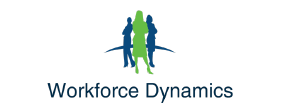Strategic Workforce Dynamics: Lessons from Political Leadership for HR Tech Innovation
7 min read
The intricate dance of power, alliances, and data management in political leadership offers surprisingly potent parallels for the modern corporate world, particularly in the realm of Human Resources. As organizations navigate an increasingly complex global talent landscape, the strategic imperatives seen in political maneuvering – forming pragmatic alliances and ensuring unwavering data integrity – are becoming foundational for successful HR Tech Strategic Workforce planning. Just as political leaders weigh strength against collaboration to achieve broader stability, HR leaders must now leverage cutting-edge technology and astute partnerships to build a resilient, future-ready workforce.
The Evolving HR Landscape: Where Strategy Meets Technology
For decades, Human Resources often occupied a largely administrative role, focused on compliance, payroll, and basic recruitment. However, the 21st century has dramatically reshaped this perception. HR is now recognized as a critical strategic partner, directly influencing an organization’s agility, innovation capacity, and competitive edge. This transformation is fueled by the rapid evolution of HR technology, which provides unprecedented tools for workforce analytics, talent management, and strategic planning.
In this dynamic environment, the twin pillars of strategic workforce alliances and robust data integrity have emerged as non-negotiable foundations for sustainable growth. Companies can no longer afford to operate in silos, nor can they base critical talent decisions on anecdotal evidence or outdated information. The demand for specialized skills, the rise of remote and hybrid work models, and intensified global competition for talent necessitate a more sophisticated, data-driven approach to human capital management. This shift is particularly pertinent for international students and professionals seeking to align their skills with global industry demands, as the strategic decisions made at the HR leadership level directly impact their opportunities.
Key Developments: Political Acumen Applied to Workforce Planning
Drawing insights from the political arena, where securing power often involves delicate alliances and meticulous data oversight, several key developments are reshaping how organizations approach their workforces.
Strategic Alliance Building for Talent Advantage: In politics, leaders often choose to cede immediate control or forgo top positions (like a mayor’s post) if it serves a larger, more stable coalition, as exemplified by the Maharashtra political scenario. Similarly, forward-thinking HR departments are moving beyond traditional, insular talent acquisition. They are forging strategic alliances that extend beyond their organizational boundaries. This includes:
- Partnerships with Educational Institutions: Collaborating with universities and vocational schools to shape curricula that directly address emerging skill gaps, creating a direct pipeline for future talent. This proactive approach ensures a steady supply of qualified candidates.
- External Talent Pools and Gig Economy Platforms: Engaging with specialized consulting firms, freelance networks, and even competitors for project-based work or niche expertise, rather than solely relying on internal hires. This allows for agile scaling of capabilities without the overheads of permanent employment.
- Internal Cross-Functional Collaboration: Breaking down departmental silos to foster interdisciplinary teams and knowledge transfer. HR, IT, R&D, and business development units collaborate closely to understand future skill requirements and design integrated talent solutions.
- Vendor and Ecosystem Partnerships: Forming alliances with HR tech providers, training organizations, and industry associations to access shared resources, best practices, and innovative solutions for talent development and management.
These alliances reflect a strategic choice to optimize overall workforce strength and adaptability, even if it means distributing influence or sharing resources. The goal is collective advantage and long-term organizational stability.
The Imperative of Data Integrity in HR Tech: The political discourse often highlights the critical importance of accurate voter rolls and the potential for manipulation or misinterpretation when data is flawed. In the corporate sphere, the integrity of workforce data is equally paramount. HR Tech platforms, while powerful, are only as effective as the data they process. Discrepancies in HR data – whether related to employee skills, performance metrics, demographic information, or career aspirations – can have significant, detrimental consequences for HR Tech Strategic Workforce planning.
- Flawed Decision-Making: Inaccurate data can lead to misguided hiring decisions, ineffective training programs, and misallocation of resources, undermining the entire strategic workforce plan.
- Compliance and Risk Exposure: Poor data integrity can expose organizations to regulatory non-compliance, legal challenges, and reputational damage, especially concerning diversity, equity, and inclusion initiatives.
- Erosion of Trust: Employees lose trust in HR systems and processes if their data is incorrect or inconsistent, impacting engagement and retention.
- Ineffective Predictive Analytics: Without clean, reliable data, advanced HR tech tools like AI and machine learning cannot accurately predict future talent needs, identify high-potential employees, or forecast attrition risks.
Modern HR Tech solutions are increasingly incorporating AI-driven data validation, blockchain for secure credential management, and robust audit trails to ensure the highest levels of data integrity. This focus on accuracy is essential for making informed, equitable, and impactful strategic decisions.
Impact Analysis: Opportunities for Global Talent
These strategic shifts in HR Tech Strategic Workforce management have profound implications for global talent, particularly international students aspiring to enter or advance within the tech industry. Understanding these dynamics is crucial for effective career planning.
- Skill Alignment Becomes Paramounte: Strategic workforce alliances and data analytics pinpoint the specific skills and competencies that will be in high demand in the coming years. For international students, this means a clearer roadmap for specialized education and upskilling. By focusing on these identified future skills (e.g., AI ethics, quantum computing, advanced data analytics, cybersecurity, sustainable technology), students can significantly enhance their employability and value proposition to global companies.
- Enhanced Opportunities for Visa Sponsorship: Companies with well-defined strategic workforce plans are better equipped to justify and manage the sponsorship of international talent. When HR leadership can demonstrate a clear, data-backed need for specific skills that cannot be easily met domestically, the case for visa sponsorship for highly qualified international candidates becomes significantly stronger. This proactive planning reduces the perceived risk and administrative burden for employers.
- Fairer and More Transparent Recruitment Processes: The emphasis on data integrity in HR tech aims to reduce bias and promote merit-based hiring. For international candidates, who may face additional hurdles in recruitment, this can lead to more objective evaluations based on skills and qualifications, rather than unconscious biases. Recruitment through platforms driven by validated skill data can level the playing field.
- Targeted Career Pathways: By understanding how companies are strategically aligning their workforces and building alliances, international students can identify organizations that are actively investing in their areas of expertise. This allows for more targeted job searches and a better understanding of potential growth trajectories within these companies, beyond entry-level roles.
Expert Insights and Practical Guidance from
“The convergence of strategic thinking, technological advancement, and a globalized talent pool means that international students must approach their career planning with a strategic mindset akin to a political campaign,” says Dr. Anya Sharma, Head of Global Talent Insights at
For international students navigating this evolving landscape,
- Research Beyond the Job Description: Investigate a company’s overall strategic workforce initiatives. Do they have partnerships with educational institutions? Are they investing in specific tech domains? This indicates their long-term talent needs.
- Develop Future-Proof Skills: Continuously assess global skill demand reports generated by HR tech analytics. Prioritize learning and certification in areas identified as critical for the future, especially those that bridge technology and business needs.
- Build a Verifiable Digital Portfolio: Leverage online platforms to showcase projects, certifications, and verifiable skills. This aligns with the data integrity focus of HR Tech, providing concrete evidence of your capabilities.
- Network Strategically: Connect with HR professionals and hiring managers who are involved in strategic workforce planning. Understanding their challenges and goals can provide invaluable insights.
- Understand Visa Pathways for Tech Roles: Research the specific visa categories and requirements for in-demand tech roles in your target countries. Proactive knowledge can strengthen your candidacy.
- Embrace Data Literacy: Develop an understanding of how data drives decision-making in HR. Being able to articulate your value in data-driven terms will set you apart.
Looking Ahead: The Future of HR Tech and Global Talent
The lessons from political strategy – the calculated formation of alliances and the rigorous safeguarding of data – will only become more central to the future of HR Tech Strategic Workforce dynamics. As AI and machine learning capabilities within HR tech continue to advance, they will empower organizations with even more precise insights into talent needs, supply chain optimization for skills, and predictive analytics for workforce development. The global competition for specialized talent will intensify, making flexible, alliance-driven talent strategies indispensable.
Moreover, the emphasis on data integrity will evolve to include ethical AI in recruitment and talent management, ensuring fairness and transparency for all candidates, including those from international backgrounds. This future will demand a constant state of adaptability from both organizations and individual professionals. International students who proactively align their aspirations with these strategic shifts will be best positioned to thrive in the global tech workforce.
Reach out to us for personalized consultation based on your specific requirements.



